Dogman in the fossil record?
When confronted with the concept of the Dogman, most people... even those inclined to 'believe' in Bigfoot, simply shake their heads.
In fact, many 'Bigfoot Researchers' tend to only accept the phenomenon either as mis-identification of ordinary wolves and coyotes, or at best, a type of Sasquatch with a pronounced face, but still a primate, like a baboon. Indications are that this 'baboon-faced' Sasquatch actually does exist and is referred to as a 'Type III'. However, most witnesses are obviously NOT looking at a hominid because so many talk of seeing 'backwards-bending' legs, and even tails.
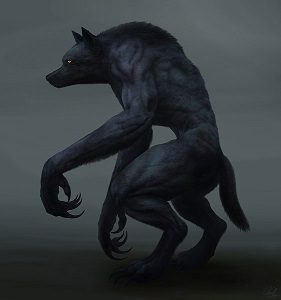
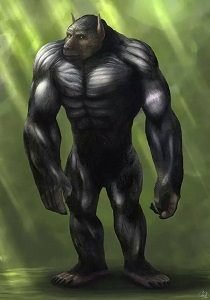
(Vic Cundiff explains the difference between the 'Sasquatch' Dogman and the Canid version here https://dogmanencounters.com/about-dogmen/)
So obviously something else is happening here.
What people fail to take into account is the incredibly long spans of time involved in the evolutionary process. According to the scientists it took 4 Million years for us to evolve from this...
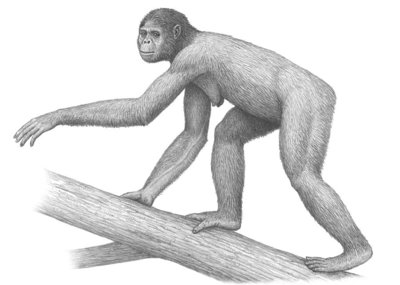
to this... 
The Canid family tree goes back much farther than that. Not a million or so years, but tens of millions.
If Bipedalism proved so successful for our ancestors, why could it not have proven just as successful for a distant canid ancestor. Is there any indication for this in the fossil record?
Bearing in mind that fossils themselves are very rare, only form in certain conditions, and procuring a full skeletal record even more rare, there are actually very large gaps and multiple options for possible dogman ancestors.
Let's look at some of them:.
In the more recent past very large wolves wandered the plains of North America. The Tar Pits hold literally thousands of their skeletons. They were the infamous Dire Wolf.

These large canids wandered the plains and forests of America alongside regular wolves, mastodons and bison. Back then the grasses on the plains would have grown very tall and thick, perhaps prompting some carnivores to stand on their hind legs in order to get a better view. (Recently I heard a researcher report seeing a large coyote standing on its hind legs for quite some time in order to better observe the researcher)
Is this how 'Dogman' evolved? ... Regular Dire wolves standing upright to see over the tall grasses of the plains for longer and longer periods?
Reports of today's Dogmen tell of them moving on all fours more than they do bipedally, but also able to walk and run bipedally if they choose.
Are Dogmen simply relic Dire wolves that, because of greater intelligence (maybe even due to bipedalism), excellent night vision and nocturnal hunting behaviour, and the ability to walk 'upright' have managed to survive and hide from the human onslaught?
This theory is supported by many reports are many witnesses reporting horrible 'popping' noises as the animal stood up, like their joints were popping into different positions.
The problem with the Dire Wolf as a possible ancestor to the Dogman is their size... they were not much bigger than the Grey Wolf. And their teeth don't match the slicing, razor sharp teeth reported from Dogman encounters.
So there must be another candidate.
One is the Epicyon haydeni.
A metre tall at the shoulder, on it's hind legs it could stand almost as tall as reported sightings of Dogman, but not quite. Also it lacks the razor teeth often ascribed to these animals.
A better candidate is the Hyaenodon gigas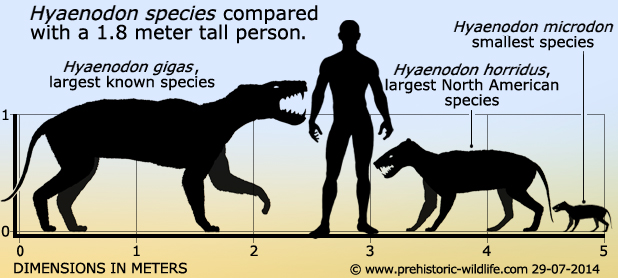 ...
...
Incredibly, this monster's teeth were self-sharpening... designed in such a way that the upper and lower incisors crossed like a pair of scissors. It was also very large. If standing upright it would have towered over us and perhaps even threatened the power and size of a fully grown male Sasquatch.
The Hyaenodon gigas lived during the Oligocene Epoch which ended 23 million years ago. This epoch was notable for its many evolutionary changes over its 'short' 11 million year period. It saw the appearance of many grasses and the herbivores that fed on them... the first elephants, early horses, etc. The following Miocene epoch would see these grasses producing extensive plains and incredibly huge herds of animals... an endless food source for such a large and powerful ambush predator.
I propose the emergence of these expansive grasslands led to an evolution of hunting technique and possibly bipedalism in these monstrous animals. Because of their size all they had to do was stand on their hind legs and they could see their prey over the tops of the tall grasses. Naturally, it helped in stalking technique too and they learnt to not only stand (like bears do) but to stalk and even eventually run fully upright.
Remember, compared to humans developing bipedalism over only 4 million years, the Hyaenodon has had 23 million years since the Oligocene to evolve, adapt and survive into the present.
From this...
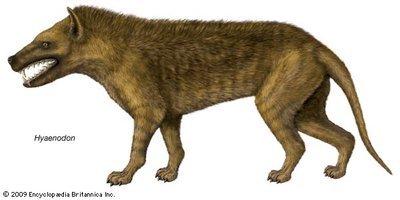
To this... 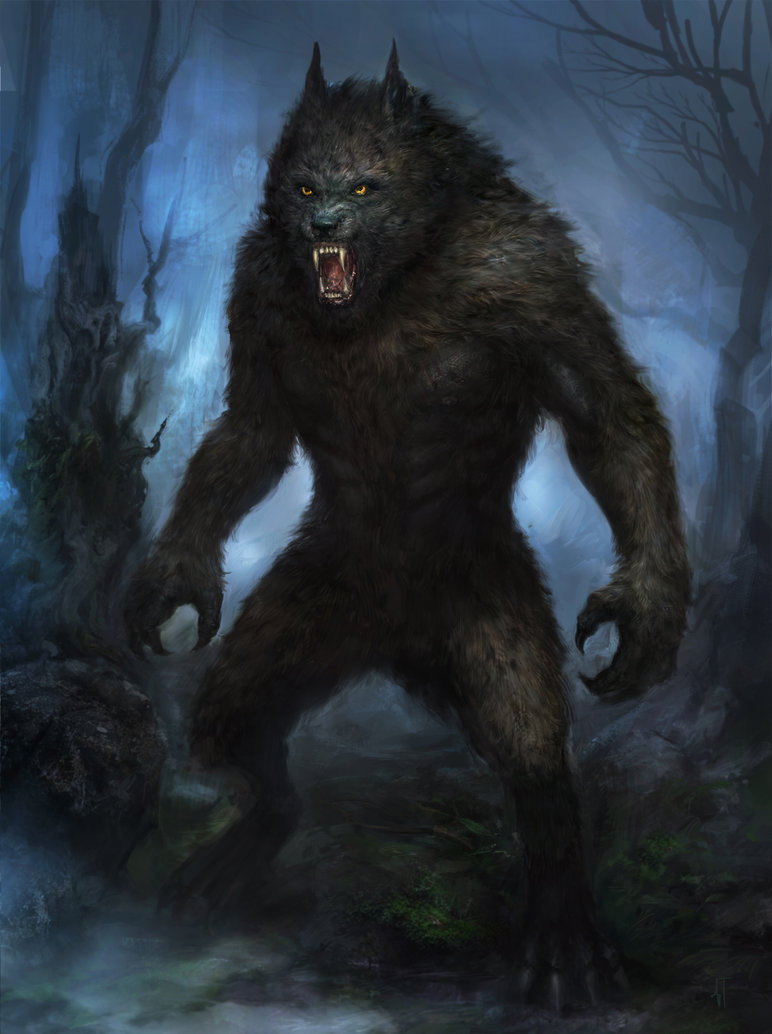 (Image from https://tsimmersergey.tumblr.com)
(Image from https://tsimmersergey.tumblr.com)

Congratulations @sasquatchsagas! You received a personal award!
You can view your badges on your Steem Board and compare to others on the Steem Ranking
Do not miss the last post from @steemitboard:
Vote for @Steemitboard as a witness to get one more award and increased upvotes!